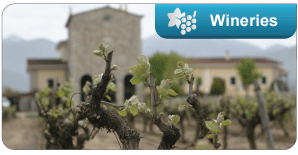Historic vineyards of northern Greece
It was in the historic vineyards of northern Greece and, more specifically, in Maronia, Thrace, that, the famed Ismarikos or Maronitis oenos was produced (the name given the wine depended on the season). In mentioning this dark-colored, near-black sweet wine, not only does Homer tell us that it was Ulysses’ favorite wine, he also cites it as being the wine Ulysses cunningly used in intoxicating the Cyclop Polyphemus who obviously had never heard of moderation, moderate wine consumption, and Greek wine culture. Maronia has always produced fine wines, with the exception of the Ottoman rule period when winegrowing became all but extinct until it was recently revived.
The next stop on our journey around the historic vineyards of northern Greece takes us to Macedonia. At Mount Pangeon (Vivlina Mountains), it was in the terroirs once located between Drama and Kavala that the renowned Vivlinos oenos was vinified from grapes of the Vivlia cultivar. Philippi, the Macedonian city, where winegrowing had enjoyed a long and flourishing tradition, was situated in that same area. A little further west, the vineyards of Halkidiki once produced Mendis, a highly acclaimed white wine. For centuries on end, Mendis was among the famous Greek wines which enjoyed high commercial success, together with equally popular wines from other areas of Halkidiki such as the wine of Toroni and the wine of Akanthos. In Byzantine times, winegrowing reached a flourishing peak. On the Mount Athos, or Holy Mountain, peninsula the monasteries established a long tradition in vinification and in the production of distillates that is still alive today. Further west, at Pella, the capital of the ancient Macedonians, the wine produced was much touted and remained popular through the Classical as well as Hellenistic times. The wine was produced from the Pellaea grape variety whose fame was such as to exert influence even over the area’s artistic activities. Our journey through the historic vineyards of northern Greece takes us still further west to Naoussa and its famous wines which were praised by many 19th-century travelers during Ottoman rule. The endowed vineyards of Naoussa, where Xinomavro is cultivated, used to yield aged red wines of such elegance that French travelers visiting the area could compare them to the famous wines of their own country. Continuing our soujourn south, we come to Siatista whose vineyards were prominent during the time of Ottoman rule and reached their peak during the 19th century. Sadly, after the onslaught of phylloxera in the area which was followed by mass immigration of the area’s inhabitants, the vineyards fell into neglect, although efforts are now being made to revive them. Siatista was well known for its straw wines (vin liastos) as well as its for air-dried ones which were produced from Moschomavro.
Last, in the region of Epirus, to the southwest of Macedonia, is the renowned mountain vineyard of Zitsa, also mentioned by 19th-century travelers as the place of production of fine sparkling wines vinified from the Debina variety.


